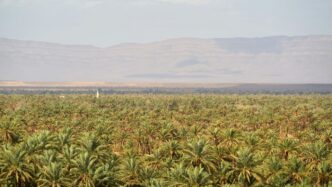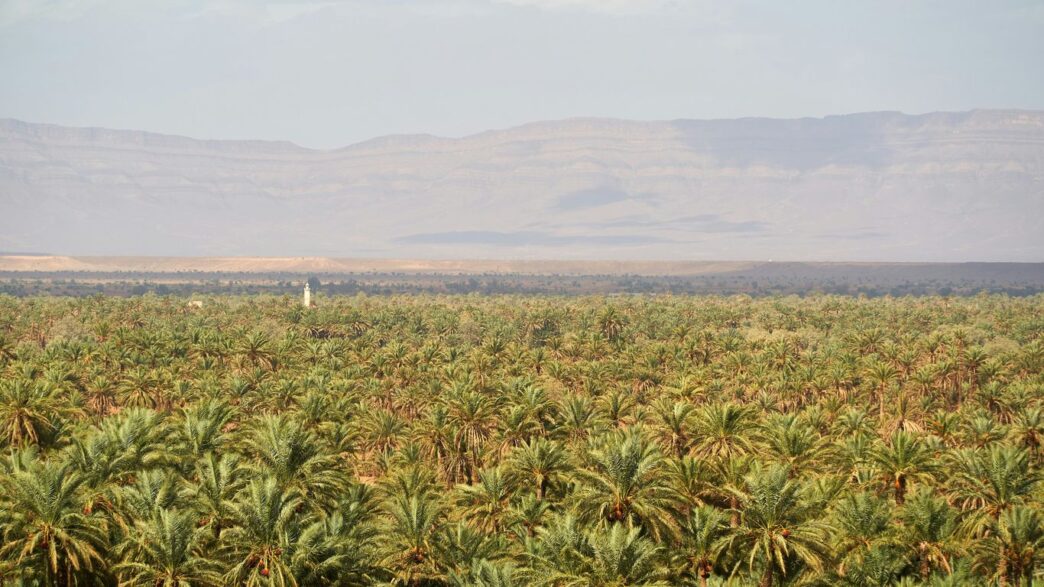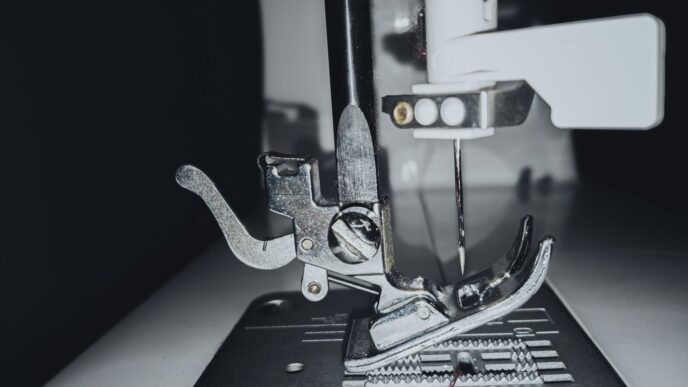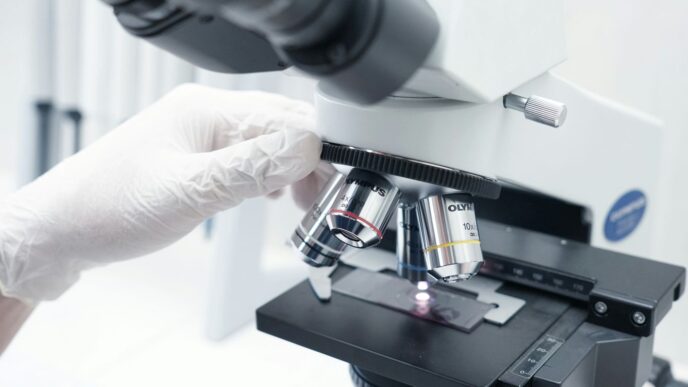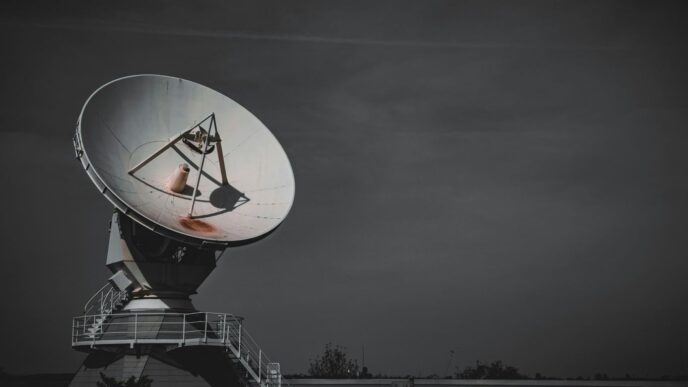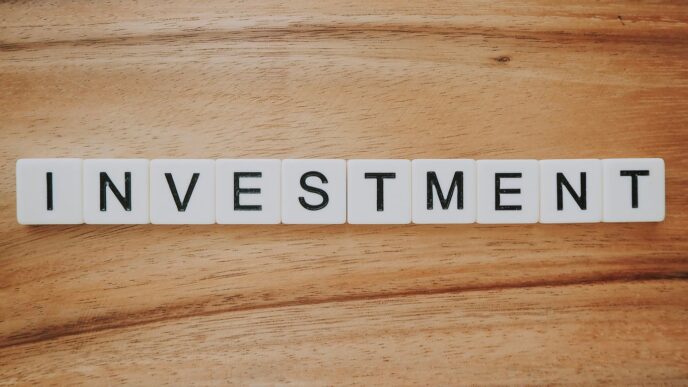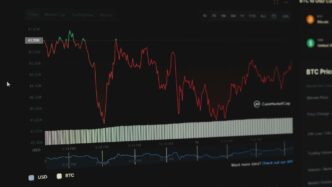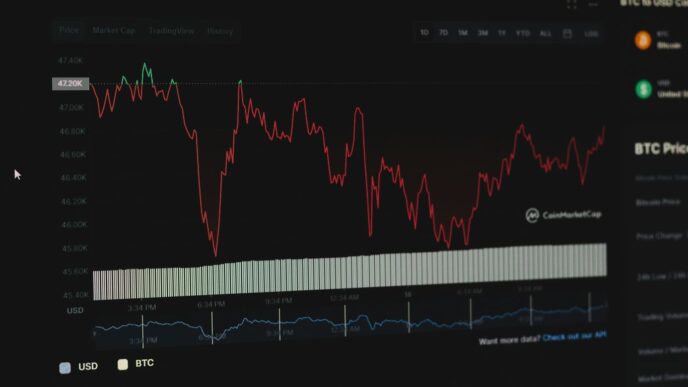When you think about deserts, you probably picture endless sand and not much else. But in Israel, things are different. Over the years, the country has managed to turn its dry, tough land into productive farms. Desert agriculture Israel isn’t just a dream—it’s a reality, thanks to smart technology, creative thinking, and a lot of trial and error. From the Negev to the Arava, Israeli farmers are growing everything from tomatoes to grapes, often using less water than you’d imagine possible. Here’s what makes Israel’s approach to desert farming so interesting, and why the rest of the world is paying attention.
Key Takeaways
- Israel has turned large parts of its desert into farmland using drip irrigation, recycled water, and soilless growing methods.
- AgTech startups like Netafim and CropX are making farming smarter with sensors, data, and AI, helping farmers use fewer resources.
- Farmers in Israel mix old traditions with new technology to grow a wider range of crops, even in harsh desert climates.
- Sustainable practices like water recycling, renewable energy, and climate-ready crops help tackle problems like water shortages and salty soil.
- Desert agriculture Israel creates jobs, boosts food security, and helps restore damaged land—offering ideas for other dry regions worldwide.
Transforming the Negev: The Heart of Desert Agriculture Israel
The Negev Desert covers over half of Israel. This place used to be mostly sand and scrub, but today, it’s a patchwork of greenhouses, orchards, and rows of vegetables. Farms here are producing food in one of the least likely places on Earth.
Pioneering Farms in the Arava and Negev Deserts
Let’s talk about the Arava and Negev areas. They weren’t called ‘barren’ for nothing. With less than eight inches of rain a year, growing anything seemed a stretch. But Israeli pioneers didn’t see a dead end. Through teamwork—think kibbutzim (collective farms) and some stubborn optimism—they started farming areas most would call hopeless. Now, these regions are shipping peppers, melons, and dates across Europe. Some numbers show just how much things have changed:
| Crop | Yield in Israel (t/ha) | Global Average (t/ha) |
|---|---|---|
| Tomatoes | 300 | 50 |
| Citrus Fruit | 262 | 211 |
There’s even competitive wine-making happening in Negev vineyards nowadays—which is pretty wild for a desert.
Integration of Modern and Traditional Agricultural Practices
What’s different about Israeli desert farming isn’t just the high-tech solutions. It’s how people mix old ideas with new ones. For example:
- Using terracing and simple sand-capture techniques from ancient times to prevent water loss.
- Combining solar-powered pumps with gravity-fed irrigation ditches.
- Rotating crops and livestock like early kibbutz settlers, but with real-time soil sensors guiding the process.
So, it’s not just about gadgets. It’s also about knowing the land and working with what’s already there.
Expanding Crop Variety in Extreme Conditions
It’s not just dates and cactus fruit anymore. Thanks to clever irrigation, seed selection, and a ‘try anything once’ attitude, farmers in the Negev now grow:
- Sweet potatoes, cucumbers, and peppers—all for export.
- Experimental varieties like desert-adapted strawberries and pomegranates.
- Even leafy greens in hydroponic set-ups inside simple shade houses.
Trial and error plays a big part. If a seed doesn’t take, they’ll try ten more. If a technique fails, they’ll tweak it until it works. Because of that, today more than 40% of all crops in Israel are grown in desert areas. The Negev isn’t just surviving—it’s producing more than regions with better land and water elsewhere. It’s proof that creativity (plus a bit of stubbornness) can really make a desert bloom.
Key Innovations Powering Desert Agriculture Israel
Israel’s deserts are known for being tough on crops, but farmers and scientists there keep finding new ways to work around those challenges. Their solutions are not just smart—they’ve actually made desert farming possible in places where it shouldn’t have worked. Here’s how they do it:
Drip Irrigation and Precision Water Management
- Drip irrigation was first developed in Israel and has completely changed how water is used in dry climates.
- Pipes and small emitters send water straight to roots, so there’s hardly any waste due to evaporation or runoff.
- Farmers now use smart irrigation controllers and sensors, sometimes hooked up to systems that rely on advanced chips and computing power, to monitor soil moisture and decide exactly when and how much to water.
- The results? Farmers typically see up to 60% savings in their water use and crops that grow more consistently, even in harsh conditions.
| Method | Water Savings | Increase in Yield |
|---|---|---|
| Drip Irrigation | 50–60% | 20–40% |
| Sprinkler/Traditional | 10–25% | 5–15% |
Hydroponics, Aeroponics, and Soilless Cultivation
When soil can’t support crops, Israeli farmers use setups that skip soil entirely.
- Hydroponics: Roots are placed in water with the right mix of nutrients. No dirt, just water—and very little at that.
- Aeroponics: Plants hang in the air, misted with water and nutrients, growing better and faster.
- Soilless greenhouses: These tightly controlled environments use materials like coconut fiber or sand for roots, and everything the plants need is added directly.
- These methods can cut water use by 80–90% and let farmers grow crops year-round, even in the middle of the desert.
- Because everything’s controlled, pests and diseases are less of a problem, and there’s almost no need for pesticides.
Desalination and Water Recycling Solutions
- Freshwater is scarce in Israel’s deserts, so desalination plants turn seawater into water fit for farming.
- Wastewater from homes and industry is treated and reused to irrigate crops, making sure nothing goes to waste.
- Some farms rely almost completely on recycled or desalinated water for their fields.
Here’s how these solutions stack up:
- Desalination provides up to 70% of Israel’s domestic water, with a growing share used for agriculture.
- Recycled wastewater covers about 85% of the country’s irrigation—a global record.
Farmers in Israel have built a system where technology—from sensors in the soil to new ways of finding and treating water—lets them keep growing, even when nature makes it hard. These breakthroughs don’t just help Israel—they’re setting new standards for how dry countries can grow food and support communities.
AgTech Startups and Partnerships Driving Change

Israel’s desert agriculture boom wouldn’t look the way it does without the small teams and startups tinkering away on new ideas, or the old pros teaming up with fresh tech companies. The Negev and Arava aren’t just testing grounds—these places are launchpads for the next generation of AgTech. Here’s how companies and collaborations are shaking things up:
Breakthroughs from Companies Like Netafim and CropX
There’s no way to talk about Israeli AgTech without Netafim. They basically invented drip irrigation decades ago, and they’re still leading in precision watering today. CropX is another big name, known for smart soil sensors. These tools let farmers know exactly when and how much to irrigate, with data sent straight to their phones. You’ll also find Taranis, using drones and AI to spot crop problems early, and SupPlant, which turns moisture and plant health data into simple advice for desert growers.
Table: Notable Israeli AgTech Startups
| Company | Main Focus | Key Innovation |
|---|---|---|
| Netafim | Drip irrigation systems | Direct-to-root water delivery |
| CropX | Soil and data analytics | Real-time soil sensors |
| Taranis | AI & field imagery | Disease/pest detection from drones |
| SupPlant | Sensor-based irrigation | Water-saving, plant-driven controls |
Role of AI and Data Analytics in Smart Farming
You’d be surprised at how much data is flying around an Israeli greenhouse. Here’s what’s making the difference:
- AI models predict water and fertilizer needs down to the hour, so nothing goes to waste.
- Satellite and drone images, combined with weather data, can pick up early signs of trouble—saving farmers a lot of money and worry.
- Farmers get friendly apps that turn all this tech into simple decisions, instead of just numbers on a screen.
The biggest win? Better harvests, less water, and more peace of mind, especially in places where resources are tight.
Collaborative Research and Global Impact
Israel’s innovation doesn’t happen in a bubble. Farms partner with universities, government agencies, and international experts all the time. Some teams are working with African or Asian countries to bring these desert-tested technologies to new regions. Others swap data or methods with neighbors, swapping what works—including:
- Participating in global research trials for new irrigation or crop varieties.
- Training local farmers and students on digital platforms and sustainable practices.
- Sharing open data with scientists abroad, speeding up breakthroughs everywhere.
From the research labs in Rehovot to dry fields in India or Chile, Israeli AgTech keeps spreading, building global partnerships that just might help more deserts bloom.
Overcoming Desert Challenges Through Sustainable Practices
Farming in the Israeli desert isn’t for the faint of heart—every day means facing water scarcity, extreme temperatures, and salty soils. Still, Israeli farmers have found smart, practical ways to wrestle productivity from the sand. Here’s a look at how they’re making it work, with some rough-around-the-edges reality along the way.
Managing Water Scarcity and Saline Soils
You can’t farm the desert if you squander water. Here’s what Israeli agriculturists do:
- Use dribble-dribble irrigation (okay, the technical word is “drip”) to give plants tiny, regular sips—not a drop wasted.
- Switch to crops that don’t freak out over salty water, like certain tomatoes and bell peppers.
- Plant in raised beds or with mulch covers to trap moisture and fight evaporation.
- Measure and tweak every bit of water and salt—sensors send data straight to a farmer’s phone in real-time.
| Strategy | Impact on Water Use | Real-World Example |
|---|---|---|
| Drip irrigation | Cuts water use by 50-70% | Tomato farms in Arava |
| Saline-resistant crops | Handles saltier sources | Bell peppers at Ein Yahav |
| Soil mulching | Slows evaporation | Melon patches in Negev |
Developing Climate-Resilient Crop Varieties
Some plants just can’t deal with 110°F heat, shifting soils, or salt. So Israeli scientists:
- Breed the tough ones: These tomatoes and cucumbers could probably survive the apocalypse.
- Test everything: If a new seed can sprout in brackish water and handle wild temperature swings, it’s a win.
- Work directly with farmers: Constant feedback means they’re not developing crops that only work in a lab.
Renewable Energy and Circular Resource Systems
Running a farm in the desert can suck up a lot of power. Here’s how many Israeli farms are flipping that script:
- Solar panels galore: There’s free sun everywhere, so why not use it?
- Recycle everything: Wastewater goes through high-tech cleaning and gets reused. Crop leftovers feed compost piles or even livestock.
- Smart rotating systems: Some places even raise fish and veggies together, where fish waste helps the plants grow and plants clean the water for fish.
In short, sustainable agriculture here isn’t just a trend—it’s a matter of day-to-day survival. The desert throws up a hundred obstacles, but necessity (and a bit of stubbornness) seems to push these farmers to keep finding ways around them.
Environmental and Economic Impacts of Desert Agriculture Israel
Israel’s desert agriculture isn’t just a technical achievement; it’s completely changing how people think about farming in some of the world’s driest places. In a region where water is scarce and the land seems impossible to cultivate, farmers have discovered new ways to grow food, care for the planet, and even create jobs. Let’s take a look at how these changes play out.
Boosting Food Security Amid Climate Change
One of the main things people notice is the impact on food supply. Israel produces more food per square mile of desert than almost any other country. Tomatoes, citrus fruits, and dairy are all flourishing even in the sandiest soils. Check out these surprising yields:
| Crop | Desert Yield (t/ha) | Global Average (t/ha) |
|---|---|---|
| Tomatoes | 300 | 50 |
| Citrus Fruit | 262 | 211 |
| Milk per Cow (L/yr) | 13,000 | 6,000–10,000 |
- Israel’s approach means less dependence on unpredictable imports.
- It’s a way to handle droughts and unpredictable rainfall, since local produce is available year-round.
- Other countries now look at Israel for ideas on farming in climates hit hard by global warming or persistent drought (Adaptation Lessons).
Job Creation and Rural Development in Arid Regions
It’s easy to think deserts are empty and unproductive, but Israel’s farms prove otherwise. Here’s how:
- Agricultural jobs in remote areas keep villages alive and draw people back to the Negev and Arava.
- Training programs teach skills in high-tech farming and water management.
- New businesses, from greenhouses to agri-tech startups, pop up wherever farming succeeds.
People aren’t just making a living—they’re helping transform entire communities. The local economy starts to improve, and services for families grow right alongside.
Restoring Ecosystems and Preventing Desertification
You’d be surprised to see greenhouses and tree lines in the middle of what was once barren sand. Using drip irrigation and targeted planting, Israel manages to actually bring desert land back to life.
- Drip systems slash water waste, meaning fewer wells run dry and soils stay healthier.
- Special crops and tree belts shield against wind and erosion, helping recover ecosystems.
- In doing so, farmers limit further desertification—the process where fertile land turns into more desert.
These efforts help to slow climate change, trap carbon, and let wildlife return. The landscape isn’t just productive; it’s being healed, bit by bit.
Israel’s story is less about one-off breakthroughs and more about changing what people think is possible in harsh places. Many of the successes in desert agriculture are now inspiring similar projects worldwide, setting the stage for a more sustainable, food-secure future, even where you’d least expect it.
Future Trends and Technologies Shaping Israeli Desert Farming

Israel isn’t just sticking to what’s worked in the past for desert agriculture—they’re pushing ahead, fast. New technologies keep popping up, and what was science fiction years ago is pretty common here. From self-driving tractors to rooftop tomatoes, the desert is now a hub for futuristic farming. Here’s a closer look at some of the big things happening right now (and on the horizon):
Autonomous Robotics and Digital Platforms
Sometimes I think the only place you see more robots than in Israel’s desert is a sci-fi movie. Farms in the Negev and Arava are starting to use robots that plant, tend, and even pick crops without needing much human help. Sensors and drones are everywhere—watching for plant stress, tracking insects, measuring water, and collecting data all day long.
- Robotic weeders and harvesters can run late, avoid errors, and cut down on labor costs.
- Digital farm management platforms use satellite and drone images to spot problems many days before a farmer ever could.
- Wireless sensors track every part of the soil and plant status, sending instant alerts if something looks off.
Urban Desert Farming and Rooftop Greenhouses
It’s not only out in the middle of nowhere. Cities like Be’er Sheva are seeing farms pop up on parking garages, old malls, and rooftops. This isn’t just for fun—these urban spots grow a hefty amount of local veggies.
Here’s what’s making it possible:
- Vertical farming units stack crops under LED lights, using closed water loops that waste almost nothing.
- Rooftop greenhouses in arid cities slash transportation costs, putting hyper-fresh produce closer to homes.
- Community gardens on school roofs and public buildings teach students and neighbors practical food growing skills—no backyard required.
Urban Desert Farming in Numbers
| Location | System Type | Water Use (per kg produce) | Annual Yield* (kg/m2) |
|---|---|---|---|
| Be’er Sheva School | Hydroponic Rooftop | 10 liters | 65 |
| Tel Aviv Mall | Recycled Vertical | 8 liters | 72 |
| Eilat Community | Soil-less Towers | 12 liters | 60 |
*Annual yield estimates from 2024 pilot projects
Agroforestry and Microclimate Engineering in the Desert
If you walk through some Negev demo farms in 2025, you’d see weird combos of trees, shrubs, vegetables, and groundcover all mixed in together. This isn’t an accident. Farmers are building mini-forests—right in the middle of the sand. Why? Because shade, leaf litter, and native trees can change local temperature and moisture, shielding crops from brutal sun and sandstorms.
- Planting drought and salt-tolerant trees alongside vegetables cools the soil and reduces evaporation.
- Living windbreaks and shade nets help keep heat stress down (plus they slow down the wind that can strip plants bare).
- Microclimate modeling with simple software now predicts which tree/crop combos are worth planting, given yearly data from heat waves and rainfall.
Farmers are tweaking these systems every season. It’s a far cry from the bare, exposed field: now, each patch might be its own carefully designed mini-ecosystem.
The truth? There’s no single trick making desert farming boom in Israel. It’s this mash-up of robotics, rooftop gardens, and smartly managed agroforests—plus endless trial and error. The land is tough, but it’s getting a little less lonely with every new technology farmers roll out.
Conclusion
Israel’s story of turning desert into farmland is honestly pretty wild. It’s not just about fancy tech or big ideas—it’s about people figuring out how to grow food where it seems impossible. Drip irrigation, smart sensors, and even old-school know-how all play a part. The Negev Desert, once just dry and empty, now grows tomatoes, grapes, and more, showing what’s possible when you mix determination with innovation. Other countries are starting to notice and try these methods too, especially as climate change makes water scarcer everywhere. Israel’s approach isn’t a magic fix, but it’s proof that with the right tools and mindset, even the toughest land can become productive. It’s a hopeful sign for anyone worried about the future of farming in a warming world.
Frequently Asked Questions
How has Israel managed to grow crops in the desert?
Israel uses special techniques like drip irrigation, water recycling, and growing plants in water instead of soil. These methods help farmers use less water and grow more food, even in the dry Negev Desert.
What is drip irrigation and why is it important?
Drip irrigation is a way of watering plants by letting water drip slowly to the roots. This saves a lot of water because it goes right where the plant needs it, instead of spreading everywhere.
Can Israeli desert farming methods work in other countries?
Yes, many of Israel’s farming ideas, like drip irrigation and using recycled water, can help other countries with dry land grow more food and use water wisely.
What kinds of crops are grown in Israel’s deserts?
Farmers in Israel’s deserts grow vegetables, fruits, flowers, and even grapes for wine. They have found ways to grow many different plants, even with little water and hot weather.
How do Israeli farmers deal with salty soil and water?
They use special plants that can handle salt, and they clean salty water using machines called desalination plants. This lets them use water that would normally be too salty for farming.
What new technology is being used in desert farming in Israel?
Farmers use smart tools like sensors, computers, and robots to check plant health, control water, and even pick crops. These tools help them grow more food with less work and fewer resources.

